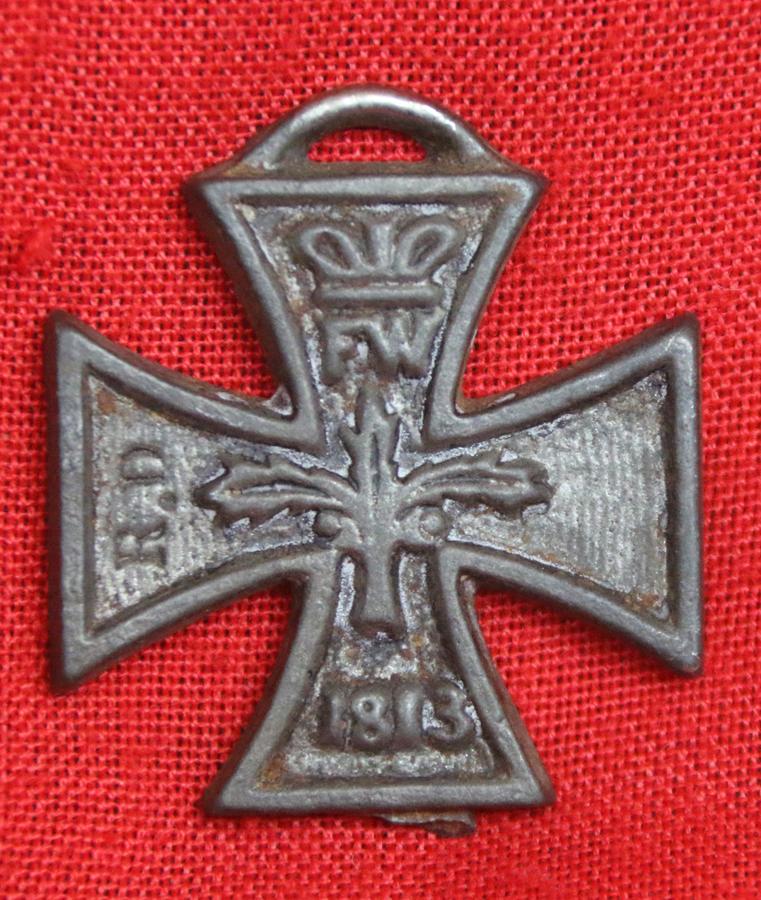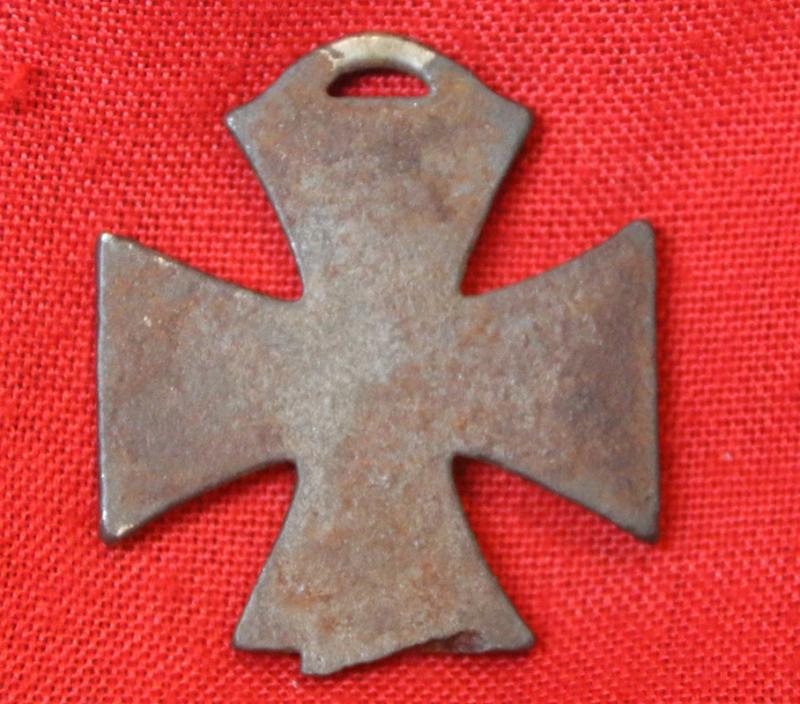A Scarce WW1 British Propaganda 1813 Iron Cross. Stamped R.D, to Front.
Sold in WW1 in Britain as a propaganda tool to mock the award for so called gallantry, when they were awarded to German soldiers as rewards for the barbaric invasions of French and Belgian towns, that were decried as scenes of butchery and depravity against the local inhabitants. Germany invaded neutral Belgium on 4 August 1914. From the next day, civilians were executed en masse, as the invasion force advanced on its first obstacle, the ring of forts around Liège. To retaliate for the shelling from these forts, the German troops rounded up inhabitants of surrounding villages. Victims were selected and shot, those still alive being killed off with bayonets. By 8 August, nearly 850 civilians were dead. By then, several of the dynamics of this particular type of violence had fully emerged. First, the massacres occurred where the invading army suffered setbacks; the German military did not consider Belgium’s military defence to be legitimate. Second, the victims were accused, incorrectly, of being franc-tireurs (civilian snipers). Most of the German rank and file genuinely believed that the locals were attacking them; this sniper delusion was sometimes countered by the commanding officers, sometimes not. Third, there were women, children and old men among the victims but the vast majority were men of military age. These were more likely to be suspected of sniping; moreover, the invading troops resented them for still enjoying the civilian life that they themselves had so recently been torn from. Fourth, and last, the massacres went together with rituals designed to show civilians how helpless they were. People were made to cheer the troops; local dignitaries (mayors, priests) were publicly mistreated, in some cases killed. On a smaller scale, invaded France saw similar killings: the first civilians were shot in the northern Meuse-et Moselle on 9 August, and, among other massacres, 60 people were killed in Gerbéviller, a large lorrain village, on 24 August. Throughout, the invaders made a point of stressing their superiority. One makeshift triumphal arch in the small town of Werchter, north of Louvain, built close to where the victims of a group execution lay buried, bore the inscription ‘To The Victorious Warriors’. As the French say, "plus ca change plus ca mem chose"
Code: 24236
110.00 GBP



